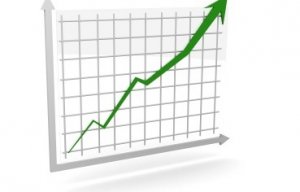
Kelheim Fibres increases prices for viscose fibres
World fibre production fell by 0.7% in 2009 following a 6.8% decline in 2008. The fall in 2009 was due entirely to a 5.7% decline in natural fibre production. Man-made fibre output, by contrast, recovered, having increased by 2.4% after a 4.2% drop in 2008. However, the increase was confined largely to China and India. The recovery in man-made fibres stemmed from growth in synthetic fibres as well as cellulosic fibres, although the rise in synthetics was less marked. Polyester

31st October 2010
Innovation in Textiles
|
World fibre production fell by 0.7% in 2009 following a 6.8% decline in 2008. The fall in 2009 was due entirely to a 5.7% decline in natural fibre production. Man-made fibre output, by contrast, recovered, having increased by 2.4% after a 4.2% drop in 2008. However, the increase was confined largely to China and India.
The recovery in man-made fibres stemmed from growth in synthetic fibres as well as cellulosic fibres, although the rise in synthetics was less marked. Polyester production reached a new high but nylon output continued to decline. As a result of these developments, the share of natural fibres fell for the third consecutive year to 36.6%, due chiefly to a 5.9% decline in cotton demand. However, declines were also recorded in wool and silk consumption.
The cotton price has been increasing steadily since March 2009, reflecting a decline in stocks to what some regard as dangerously low levels. The decline in stocks stemmed from a recovery in demand combined with declining output as low prices in 2008/09 discouraged farmers from planting cotton.
Furthermore, fears over stock shortages have been exacerbated by the recent flooding in Pakistan. In fact the cotton price has risen above the one dollar barrier for only the second time in its history, and by September 29, 2010, it hit 115.6 cents/lb from a low of 51.50 in March 2009. For the 2010/11 crop year as a whole (August 1, 2010-July 31, 2011) demand will continue to exceed supply slightly and stocks will diminish as a consequence. Nonetheless, the average price is expected to soften as global supplies increase.
Wool prices also rose during the 2009/10 season—due to concern over future stock levels—to reach A$9.22 per kg in March 2010. But the price then fell back due to the strengthening of the Australian dollar and by September 30, 2010, it stood at A$8.75 per kg. Looking ahead, the price looks set to remain below A$9 per kg as customers seem unlikely to increase their purchases significantly. Over the 2010/11 season, consumption is expected to be slightly higher than output. Stocks are therefore likely to rise and the increase looks to be enough to constrain prices.
Global demand for wool fibre is being sustained largely by consumption in China. Elsewhere, it is being depressed by the restructuring of the textile industries in industrialised countries. In the EU, consumer demand looks weak and stocks of finished items continue to grow. The problems are particularly acute in Italy, where a substantial amount of manufacturing capacity is being relocated to Eastern Europe and China.
26 pages, published October 2010

Business intelligence for the fibre, textiles and apparel industries: technologies, innovations, markets, investments, trade policy, sourcing, strategy...
Find out more